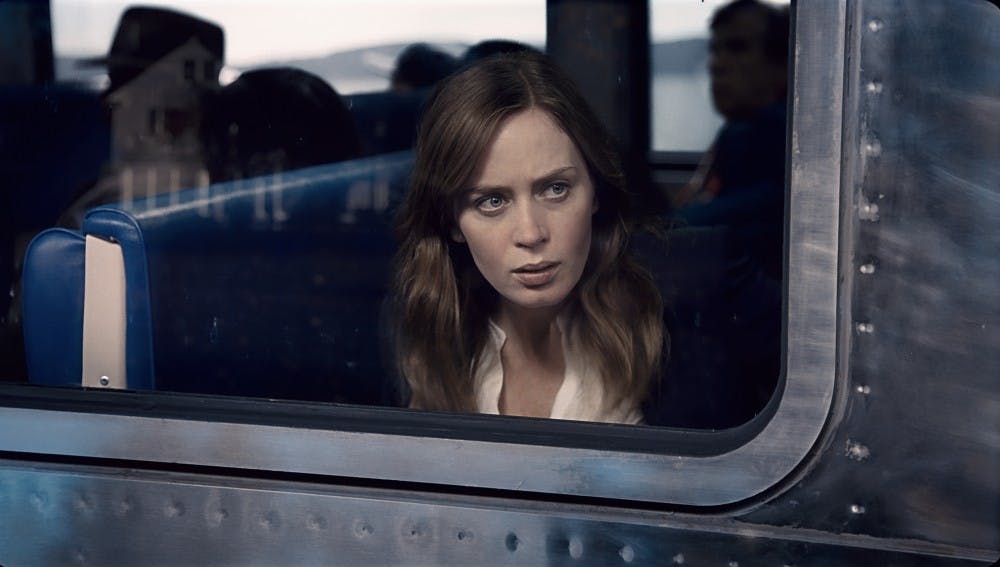Within the past few years, the popularity of Gillian Flynn’s “Gone Girl” and its equally successful film adaptation has led to an overwhelming trend of female-centric thrillers.
Similar narratives have popped up in bookstores and movie theaters all over — a beautiful, seemingly innocent white girl goes missing, and as friends and family examine their lives for clues to her whereabouts, it turns out she isn’t nearly as innocent as she seems.
Pair this familiar story with an unreliable narrator and a sex scene or two, and you’ve got a money-making combination.
Paula Hawkins’ “The Girl on the Train” is the most popular “Gone Girl” imitator to date, and while the comparison to Flynn’s smash hit may seem overdone at this point, it’s genuinely unavoidable.
Obvious similarities in plot aside, Hawkins clearly strives to match Flynn’s sharp, ugly-pretty writing style and efficient twists (anyone who has ever read Flynn’s debut, “Sharp Objects,” should understand exactly how “ugly-pretty” her writing can be.)
David Fincher took Flynn’s novel and spun it into a haunting, meticulously crafted thriller that enticed and disturbed audiences. In someone else’s less-skilled hands, “Gone Girl” could have been relegated to a trashy, one-off whodunit, despite the quality of Flynn’s original source material.
While “Gone Girl” managed to avoid this fate, “The Girl on the Train” was not so lucky.
Thanks to an array of book-to-screen changes (moving the setting from London to New York) some odd casting choices (“overweight alcoholic” and Emily Blunt don’t exactly go hand in hand), and an unfortunate choice of director (did the guy from “The Help” seem like the most appropriate choice?), the film adaptation of Hawkins’ novel had some hurdles to clear from day one.
The film follows depressed alcoholic Rachel Watson, played by Blunt, as she wastes her days away guzzling vodka out of a water bottle and riding the train back and forth to New York.
Gazing out the window, she has developed an obsession with one particular house seated next to the tracks, where she concocts a fantasy life for the beautiful blonde and her husband who live there.
When Megan Hippwell — the young woman in Rachel’s fantasy — goes missing, Rachel is pulled back to reality in a big way. She begins to work her way into the lives of the couple, all the while avoiding pieces of her former life that may actually be connected to Megan’s disappearance.
“The Girl on the Train” boasts a strong cast, which may have contributed to early optimism for its success.
On paper, the lineup is promising. “The Leftovers” star Justin Theroux plays Rachel’s ex-husband; striking newcomer Haley Bennett plays Megan; “Mission: Impossible — Rogue Nation” standout Rebecca Ferguson plays Rachel’s icy romantic rival Anna; and recent leading-man-of-choice Luke Evans plays Megan’s controlling husband Scott.
Add Blunt in the lead role, and it seemed like a recipe for success.
Or not.
A sluggish script, dull editing and some strange choices by director Tate Taylor somehow manage to bring out the worst in this cast.
Theroux and Ferguson can’t seem to decide whether their characters are good or bad, and the inconsistency does nothing to help the film’s attempted plot twists.
Evans and Bennett are certainly eye-catching, but that may have more to do with their looks than with their actual acting.
Edgar Ramirez is fine in his small role as therapist Kamal Abdic, but it was hard to get over the realization that Hollywood yet again decided that one non-white actor is apparently just as good as another.
Kamal Abdic is definitely not a Latino name, but apparently the producers couldn’t be bothered to either change the name to something that actually makes sense with their casting choice, or to actually cast someone ethnically appropriate.
Oh Hollywood, never change. (No, actually, please change. Change soon.)
Blunt is the clear standout of the film, but even she struggles with the lifeless writing provided to her.
She does her best. Blunt’s Rachel is stripped bare before the camera — a broken, emotionally vulnerable woman who can’t help but obsess over her past happiness. It’s certainly an impressive performance, but it isn’t enough to save the film.
Despite being marketed as an intense thriller, “The Girl on the Train” feels boring more often than not.
Some of the twists are obvious from the very beginning, and the ones that aren’t may not make much sense to non-book readers.
Hawkins’ novel is certainly imperfect, but instead of fixing these flaws in his film adaptation, Taylor manages to add several of his own.
“The Girl on the Train” may have been doomed from the beginning by unflattering comparisons to the far-superior “Gone Girl,” but it had the opportunity to find success in its own right. Unfortunately, Hawkins’ novel seems to have fallen off the tracks somewhere on the way to the big screen.




